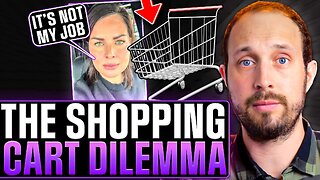Complete Guide: 2004-2013 Toyota Highlander Rear Wheel Bearing Replacement Tutorial
In this step-by-step tutorial, we'll show you how to replace the rear wheel bearing and hub assembly on a 2004-2013 Toyota Highlander. Whether you're a seasoned DIYer or tackling this for the first time, we've got you covered. Proper repair of a bad wheel bearing is crucial for safety, and this guide will walk you through the process in detail.
🔧Buy Toyota Highlander Rear Wheel Bearing: https://amzn.to/3F9eO9K
🔧Buy Anti-Seize Lubricant: https://amzn.to/3Ems22d
🔧 Buy Brake Caliper Grease: https://amzn.to/3PtWIVQ
🔧 Buy PB Blaster Penetrating Oil: https://amzn.to/3rGzjaq
#cartips #automotive #autorepair
Replacing a rear wheel bearing on a 2004-2013 Toyota Highlander involves several steps. It's important to have the right tools and take necessary safety precautions. If you're not comfortable with this level of automotive work, it's recommended to seek professional help.
Here's a general outline of the process:
**Tools and Materials Needed:**
1. Jack and jack stands
2. Lug wrench
3. Socket set and ratchet
4. Torque wrench
5. Screwdrivers (flat and Phillips)
6. Pliers
7. Hammer
8. Wheel bearing kit (which includes the bearing and seal)
**Procedure:**
1. **Safety Precautions:**
- Make sure the car is on a level surface and the parking brake is engaged.
- Wear safety glasses and gloves.
- Use jack stands to support the vehicle securely.
2. **Remove the Wheel:**
- Loosen the lug nuts slightly (but don't remove them completely).
- Lift the rear of the vehicle using a jack and secure it on jack stands.
- Finish removing the lug nuts and take off the wheel.
3. **Access the Bearing:**
- Locate the rear wheel bearing assembly.
- It's usually behind the brake rotor. You'll need to remove the brake caliper and rotor to access it.
4. **Remove the Brake Caliper:**
- Use a socket wrench to remove the bolts securing the caliper.
- Hang the caliper using a bungee cord or wire (do not let it dangle from the brake line).
5. **Remove the Brake Rotor:**
- If it's stuck, you may need to tap it gently with a hammer.
6. **Remove the Old Wheel Bearing:**
- Depending on the design, you may need to remove a retaining clip, nut, or bolts.
- Once removed, use a bearing puller or press to take out the old bearing.
7. **Install the New Wheel Bearing:**
- Clean the area where the bearing will sit to ensure a clean fit.
- Using a bearing press, gently press the new bearing into place.
- Make sure it's seated properly.
8. **Reassemble:**
- Put the brake rotor back on.
- Reattach the brake caliper and secure it with the bolts.
9. **Reinstall the Wheel:**
- Line up the wheel's lug nut holes with the wheel bolts.
- Hand-tighten the lug nuts as much as possible.
10. **Lower the Vehicle:**
- Carefully lower the vehicle using the jack.
11. **Torque the Lug Nuts:**
- Once the vehicle is on the ground, torque the lug nuts to the manufacturer's specifications using a torque wrench.
12. **Test Drive:**
- Take the car for a short drive to ensure everything feels and sounds right.
**Important Notes:**
- It's crucial to follow manufacturer specifications and guidelines for torquing bolts and nuts.
- Use caution when working with heavy components like brake calipers and rotors.
- If you're uncertain about any step, consult a professional mechanic or refer to the vehicle's service manual.
Remember, this is a general guide and the specifics may vary based on your exact vehicle model and any unique design features it may have. Always consult the specific service manual for your vehicle and exercise caution while working on any automotive project.
Disclaimer
Our videos are for entertainment purposes only. It is recommended that you seek advice or help from a qualified professional while attempting any and all repairs.
Do-it-yourself repairs can involve risk and injury, we assume no responsibility or liability for losses, damages, or injuries that include but are not limited to direct, indirect, special, incidental, actual, consequential, or punitive. All repairs performed by our viewers are at your own risk.
While we do review products that we use daily or have even used for years, we also review and test products for companies that have compensated us to try their product out. We are independently owned, the opinions expressed are our own from personal experience while using any and all products.
We are a participant in the Amazon Services LLC Associates Program, an affiliate advertising program designed to provide a means for us to earn fees by linking to Amazon.com and affiliated sites. Recommended products with links may be commission-based when products are purchased from them.
-
 LIVE
LIVE
Vigilant News Network
14 hours agoMedia Blackout: 10 News Stories They Chose Not to Tell You - Episode 26
3,691 watching -
 1:18:16
1:18:16
The Late Kick with Josh Pate
11 hours agoLate Kick Live Ep 520: SEC vs Texas | Unpopular CFB Opinions | PennSt Whiteout Issues | Bama Mood
59.1K3 -
 LIVE
LIVE
Right Side Broadcasting Network
6 days agoLIVE REPLAY: President Donald J. Trump Holds a Rally in Las Vegas, NV - 6/9/24
5,255 watching -
 16:09
16:09
Clownfish TV
14 hours agoMicrosoft DISABLES Windows Recall After MASSIVE Public Backlash!
38.7K62 -
 16:17
16:17
TENET Media
17 hours agoThe Shopping Cart Theory | Matt Christiansen
44.1K34 -
 17:55
17:55
JoBlo Originals
1 day agoWhat Happened to EPIC MEAL TIME?
48.7K6 -
 31:02
31:02
Degenerate Plays
16 hours agoBest Girl Needs Her Swimsuit - Final Fantasy 7: Ever Crisis : Part 2
50.2K6 -
 48:14
48:14
World Nomac
1 day agoMy First Time in Shanghai, China 🇨🇳
54.4K12 -
 2:57:13
2:57:13
SNEAKO
17 hours ago"Who Do You Hate the Most?" - One Minute Podcast
120K119 -
 4:47:25
4:47:25
SonnyFaz
12 hours agoDr. Shiva x Sonny IRL
68.8K49